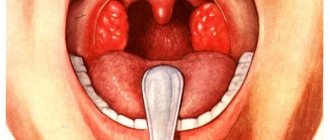CONSULTATION WITH A PSYCHOLOGIST, PSYCHOTHERAPIST
231-22-80; 231-22-87; 993-22-48
In social society, the issue of substance abuse among young people is very popular and acute. They find this illness to be good fun for themselves. Curiosity and learning something new, lack of personal opinion and willpower are the main causes of adolescent and child substance abuse.
It is also possible to identify the main reasons for the use of chemicals:
- Psychological . A thirst for autonomy and independence, a desire to become adults as quickly as possible.
- Social . This problem most often occurs in dysfunctional families. In them, the lives of young people are not under control. Such teenagers spend a lot of time on the street and find themselves in dysfunctional companies. People in adolescence are not trained to pull themselves together and do useful things, which leads them to various addictions. Including substance abuse.
- Other reasons . The desire to be like others, curiosity about the unknown.
To achieve a high, young people use inexpensive and affordable chemicals. Among them: solvents, glues, paints, stain removers. Inhaling the vapors of such substances leads the body to a state of drug intoxication. The effect of euphoria depends on the means used, the dose of inhalation and its delay.
Phases of intoxication in substance abuse
- Very similar to being intoxicated by alcohol. The brain is in a slight haze, the mood is elevated, the state is relaxed. In this phase, it is quite easy to awaken the patient; he is conscious, hears and sees everything. If you continue inhaling further, the second phase will begin.
- At this phase there is complete lightness. The mood is very cheerful, I want to sing and dance, I have more than enough energy. To avoid overdose, many substance abusers stop at this phase. For those who are not afraid of excess toxins, the third phase begins.
- This phase is characterized by the appearance of hallucinations. The addict watches cartoons and is in a state of inaccessibility. The period of euphoria in this phase lasts for several hours. When the effects of the substances wear off, all feelings of weightlessness disappear. And after a while, the drug addict wants to repeat this high.
Causes of substance abuse
It is obvious that using household and chemical substances for other purposes is dangerous to life. But most often, substance abuse develops in childhood and adolescence, when they simply don’t think about the consequences.
The main reasons for use can be called:
- desire to try new things;
- "bad Company;
- emotional instability;
- inability to refuse;
- imitation of peers, the majority,
- bad manners;
- weak will;
- lack of education;
- dysfunctional family;
- misunderstanding and mistrust in the family;
- lack of love from parents;
- lack of funds for drugs or alcohol.
Features of substance abuse
The main way for drug addicts to consume toxic substances is inhalation, that is, toxic substances that have a hallucinogenic effect are inhaled through the mouth or nose and enter the lungs. Absorption in the lungs occurs almost instantly, the substance enters the blood and affects the central nervous system. Substance abuse is very dangerous to human health. The euphoric effect caused by the inhaled substance is completely insignificant compared to its toxic effect. This is explained quite simply - the human body simply does not have enzymes that can destroy these toxins. A clear comparison: drug addicts inhale mainly petroleum products, and oil pollution is the most dangerous, since oil takes a very long time to break down naturally.
How does substance abuse develop?
Inhalation of volatile vapors from gasoline, glue, paint, and solvent causes colorful hallucinations. For the first time, a person experiences real pleasure, the severity of which depends on the concentration of the substance and the depth of inspiration. Then negative consequences appear: nausea, vomiting, headache. Gradually, each time, the body learns to cope with unpleasant symptoms and substance abuse becomes a habit, causing addiction. Euphoria takes over a person's consciousness. Tolerance develops. And after some time, refusing to inhale chemicals causes real withdrawal.
Types of substance abuse
Substance abuse can be roughly divided into several types based on the chemicals that substance abusers prefer to use. The following types of substance abuse
: 1. Gasoline. 2. Acetone. 3. Inhalation of solvents (this also includes inhalation of glue). 4. Inhalation of various aerosols (insect repellents, deodorants, etc.). Let us repeat once again that the division is arbitrary, since the classification of substance abuse is difficult due to the fact that it is difficult to isolate one active substance; even gasoline contains a huge amount of light hydrocarbon fractions. The most common types of substance abuse are gasoline and acetone, due to the widespread prevalence of these substances.
What do substance abusers use?
Most often, substance abusers, due to lack of funds, use easily accessible household products, such as:
Petrol. Euphoria occurs within 10 minutes and can last up to 5 days. The acute phase lasts about half an hour, and then the person is in prostration for up to 5 days. And if pleasant sensations arise at first, then the person suffers from a terrible headache and loss of appetite.
Glue. Euphoria gives way to hallucinations. There is a high probability of suffocation, because drug addicts put a plastic bag over their heads.
Acetone. In addition to euphoria, acetone vapor causes an increase in sexual desire. There is no sense of time and space. After the session, fatigue, irritability, vomiting and nausea occur.
Solvents. Their use causes a feeling of lightness, which is then replaced by vomiting and headache.
Stages of substance abuse
So what makes people become substance abusers? The impact of volatile toxic substances on the human body manifests itself in several phases: 1. Euphoric
- in general terms similar to alcohol intoxication.
There is an uplift in mood and general relaxation. 2. Hallucinatory
- continued inhalation (inhalation) of a volatile toxic substance aggravates intoxication.
The brain is affected. The drug addict loses his sense of reality, first auditory and then visual hallucinations appear. Hallucinations can be quite complex - many substance abusers compare them to a full-fledged cartoon. 3. Stage of affect
.
At this stage, a specific feeling from the above effects prevails. It can be a feeling of joy, bliss or fear. 4. Stage of reverse development
. Pleasant sensations are replaced by symptoms of poisoning - dizziness, headache, nausea, vomiting, palpitations. The person becomes irritable and angry.
Symptoms of substance abuse
The euphoria of substance abuse does not last long. In a short period of time, a person manages to experience 3 phases of exposure to the substance. At first, the mood rises, a pleasant warmth spreads throughout the body, and there is a little noise in the head. If you interrupt the session, the euphoria will pass and only negative feelings will remain. If you continue to inhale, the second phrase of unbridled joy begins. Many teenagers stop the session at this phase. At the third stage, cartoons appear - vivid hallucinations. This phase is life-threatening because the substance completely takes over the consciousness of the user.
After the so-called session, withdrawal syndrome develops. The whole body feels broken. My head hurts. The person feels sick and vomits.
What do drug addicts smell?
The use of toxic substances with a narcotic effect occurs through inhalation of their harmful fumes. This gives a hallucinogenic effect and allows you to breathe the chemical for a relatively long time without immediately feeling poisoned.
Among the most popular substances:
- toluene (solvent);
- liquid glue (most often “Moment” glue or its cheap analogues);
- stain removers;
- gases (propane and butane);
- medicines;
- acetone;
- gasoline and much more.
The main methods of administration are inhalation through a plastic bag or through a handkerchief soaked in the product.
Sometimes, “sniffers,” as they are called in slang, experiment with the composition, mixing several incompatible liquids, and when inhaled, they instantly die.
Health implications
Substance abuse harms not only a person’s physical health, but also a person’s social status. The use of chemical substances damages the human psyche.
With constant inhalation the following develop:
- chronic intoxication of the body,
- insomnia,
- chemical burns of the respiratory system,
- degeneration of organ structure,
- various diseases of the cardiovascular system,
- depression,
- brain damage.
There is a high risk of delirium and dementia. But the worst thing is that many of the consequences are irreversible.
What are the dangers of substance abuse?
First of all, the danger lies in the impact of toxic substances on the entire human body - the liver, kidneys, and central nervous system are affected. Substance abuse causes equally serious harm to the psyche - it causes psychological dependence on inhalants (inhaled substances). That is why drug addiction specialists deal with the problem of substance abuse. Substance abuse poses a huge social danger - it mainly involves children and adolescents aged 11-16 years, since substances used by substance abusers are freely available (gasoline, glue, etc.). The main danger of substance abuse is associated with the high probability of death during the use of toxic substances. Children and teenagers sniff gasoline and acetone from plastic bags, sometimes simply putting them on their heads. And in a state of toxic intoxication, it is very easy to forget about the package. That is why among drug addicts there is a very high mortality rate from hypoxia or overdose.
Substance abuse is an evil that needs to be fought.
Advantages of treatment in the clinic
The main advantages of seeking help from our rehabilitation center:
- Affordable prices for services.
- Interesting ways to organize leisure time and effective therapy.
- An integrated approach - from eliminating signs of substance abuse to restoring social connections.
- The use of modern drugs and the latest techniques.
- Compliance with the principle of confidentiality.
Call or come to our clinic any day to find out more information about rehabilitation.
Literature:
- Fundamentals of social medicine [Text]: educational and methodological manual for organizing independent work of students / Z. N. Khismatullina; Kazan State Technological University - Kazan: KSTU, 2011. – 84 p.
- Addictology (Federal State Educational Standard of Higher Professional Education): an illustrated textbook for students of higher educational institutions of the humanities (all levels of training) / B. R. Mandel. — Moscow: DirectMEDIA, 2014. — 535 p.
- Psychiatry for everyone: popular. reference / O. F. Eryshev, A. M. Sprints. - St. Petersburg. ; M.: Neva, 2005. – 376 p.
Symptoms
Signs of substance abuse can vary greatly depending on the chemicals used. However, doctors identify the following typical symptoms of the disease:
- increased salivation;
- cough;
- sore throat;
- dilated pupils;
- dyspnea;
- headache;
- impaired coordination of movements;
- feeling of intense thirst.
Prolonged inhalation of gases or solvents distorts a person's perception of space and time. Hallucinations lead to emotional disturbances; the addict experiences irritability, short temper, and anxiety.
If a substance abuser abuses inhalants, then a pronounced smell of paint and solvents can be felt from his clothes, skin and mouth. Even just one use of inhalants disrupts the heart rhythm and decreases oxygen levels, which can lead to death.
Chronic use of inhalants causes irreparable damage to the brain, heart, liver and kidneys. Addicts experience the following symptoms:
- depressed mood;
- general weakness;
- tension;
- nervousness.
To get rid of unpleasant symptoms, the addict is forced to constantly use the inhalant. At first it all starts with a small dose, but gradually the drug addict increases the consumption of the substance without controlling himself, which can lead to death.
Talking to teenagers about substance abuse
Conversations about the dangers of substance abuse are a frequent accompaniment of lectures at school, college, college and other educational institutions. Often people who have managed to cope with addiction are invited to such lectures. Former residents of drug treatment centers share with children their experience of overcoming addiction and form a correct understanding of the dangers of substance abuse in students.
Diagnostics
Substance abuse can be identified if a person has a noticeable persistent desire to systematically breathe in toxic substances. The difficulty in making a diagnosis is due to the fact that the components of the chemicals are completely eliminated from the body 4-5 hours after consumption. Detecting and identifying the toxin becomes an almost impossible task.
Laboratory research methods are also powerless in making a diagnosis. They are used only if a substance abuser is admitted to the clinic with symptoms of acute chemical poisoning. A blood test allows you to determine which substance led to intoxication. An analysis is also carried out to determine the level of electrolytes in the blood, the kidney-hepatic complex, and the study of the enzymatic composition of the blood.
Prevention of substance abuse among adolescents
The main way to prevent substance abuse among children and adolescents is to create a healthy environment. Parents who have warm, trusting relationships with their children rarely encounter such a problem.
Educational institutions often hold lectures on the dangers of drugs, alcohol and toxic substances. Such conversations can be carried out at home, but they require establishing good contact with the child. If it is impossible to independently build quality communication, it is recommended to contact a family psychologist.
Find out treatment recommendations without leaving home for free
To select a treatment plan, you just need to leave a request, we will contact you to select the time and specialist you need
Submit your application
How does substance abuse affect the human body and his life?
An adult who uses inhaled toxins, just like a teenager, quickly develops addiction. Constant poisoning leads to a decline in performance and a transition to an asocial lifestyle. Most lovers of “artificial highs” are unemployed, many do not have a permanent place of residence. Their main income is theft, begging, collection and delivery of recyclable materials.
A characteristic feature of substance abusers is the intake of volatile substances in groups, which forms a certain society and lifestyle around them, and aggravates toxic dependence. Changes in character are also clearly visible: constant aggressiveness, irritability, conflict are observed, the level of empathy and self-criticism decreases. A person rapidly moves away from generally accepted norms of life and behavior, and subsequently becomes involved either in an asocial lifestyle, or in a criminogenic environment, or acquires severe chronic mental illness.
Poison Clinic
Externally, the state after abuse of toxic substances is similar to drug intoxication. The first signs of poisoning after inhaling chemicals appear after 5 minutes - a person feels tinnitus, dizziness, blurred vision. After 7-10 minutes, the body becomes uncoordinated in space. In the next 3 minutes, a feeling of increasing fun, euphoria, and pronounced psychomotor agitation is recorded. For 15 minutes, a person experiences hallucinations, but for him this period of time is subjectively extended, he is not aware of it.
After the cessation of the effect of toxic compounds, a decline in the experienced sensations occurs, and drug addicts at this stage repeat the inhalation of toxic substances. On average, 7-8 such cycles are carried out. If their number increases, there is a high probability of developing stupor, depression of consciousness and coma due to a severe overdose of the drug used. After 2-3 such uses, a person becomes mentally dependent. From this moment on, he strives to again experience euphoria and hallucinations, the absence of which leads to increasing discomfort.
After 1-2 months, substance abusers begin to use chemicals twice a day with constantly increasing doses. Abrupt withdrawal of use threatens withdrawal or the development of withdrawal syndrome, accompanied by symptoms of damage to the central and autonomic nervous system. The condition lasts until a new dose of toxic substances enters the body, and if they are unavailable - from 5 days to 2 months.
The impact of substance abuse on a teenager's body
The most destructive effect of inhaling glue and solvent is on a young, unformed organism. Teenagers who sniff glue and other drugs experience a severe decrease in intelligence, difficulty concentrating, and memory problems. Schoolchildren's performance is falling; in physical discipline, which requires reaction speed, they have the lowest scores.
Among the basic behavioral reactions of children who are drug addicts are:
- passivity;
- lethargy;
- slowness;
- laziness;
- lack of desire to communicate with peers;
- aggression;
- irritability.
The general picture of the psychological health of an experienced substance abuser is developmental delay, up to complete dementia.
Treatment methods
Treatment of addiction to any toxic chemical substances takes a long time and is associated with relapses. During therapy, it is prohibited to use drugs that affect a number of hormones: dopamine, adrenaline and norepinephrine, since there is a possibility of increased sensitivity of the myocardium to them due to the use of inhalants.
Treatment of substance abuse after consultation with a narcologist consists of several stages:
- Detoxification, infusion therapy. The doctor injects solutions into the patient’s bloodstream to cleanse the body of toxic substances, correct disorders in the kidneys, liver, heart and improve its general condition. In severe cases, hemodialysis is prescribed. To improve metabolic processes, antihypoxants, neuroprotectors, and hepatoprotectors are used.
- Elimination of withdrawal symptoms that were caused by withdrawal of a chemical substance. If a patient experiences irritability or attacks of anger, he is prescribed antipsychotics, for apathy and depression - antidepressants, and for increased anxiety - tranquilizers. To stimulate mental activity, you need to take nootropics and vitamin-mineral complexes.
- Stabilization of mental state, relief from signs of depression. Depending on the patient’s condition, individual or group sessions with a psychologist are held.
- Social rehabilitation. It involves restoring social connections, communicating with friends and family. The patient also needs to stop contacting potentially dangerous groups.
After completing the main course of treatment, you will need to perform health procedures. The patient is advised to walk in the fresh air more often, exercise regularly, strictly follow a diet and ensure proper sleep. A change of environment and new acquaintances also have a positive effect on the psychophysical state of the patient.
Reasons for formation
Substance abuse develops against the backdrop of many factors. The most common include:
- adolescence in adolescents;
- increased susceptibility to suggestion;
- infantilism;
- tendency to depression and suicidal mood;
- dependence on other people's opinions;
- financial difficulties;
- lack of a favorite job or hobby;
- friendship with dubious company;
- low level of education;
- negative atmosphere in the family.
Most often, substance abuse develops in people with mental disorders. Pathology involves inhaling chemical vapors that cause intoxication and hallucinations reminiscent of vivid and colorful dreams. If a person is not satisfied with his life, he tries to temporarily get rid of disturbing thoughts. An illusory world created by hallucinations helps him to hide from irritating factors. Also, a person’s environment plays a key role in the development of the pathological condition. If one of your relatives or friends already suffers from addiction, then it can have a negative impact on them.
Passive intoxication
There is such a thing as passive substance abuse. A person may be exposed to chemicals without wanting it, for example, during renovation work in a residential area, etc. As a result of inhaling fumes of toxic substances, intoxication and hallucinations may develop. As a rule, this happens in a closed, unventilated room.
To avoid passive poisoning, it is recommended to use personal protective equipment - gas masks and respirators when handling chemical products. There are many cases where, after renovation with low-quality finishing materials, a closed room turned into a gas chamber. That is, people living in these conditions may well become victims of toxic poisoning.









